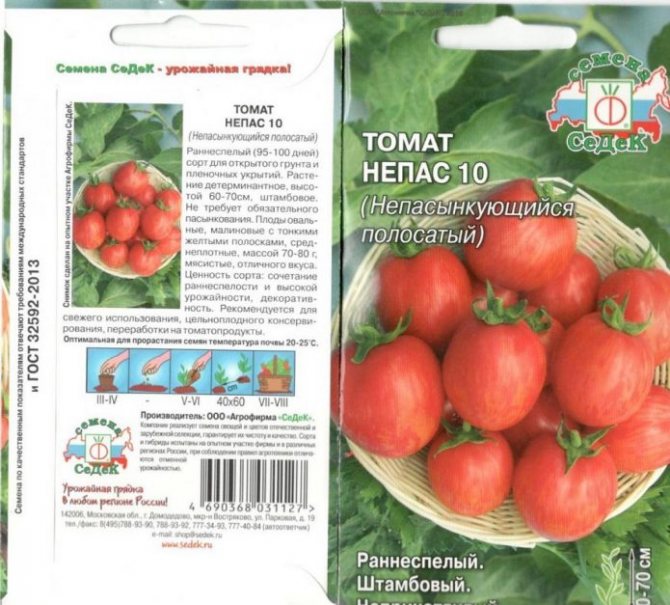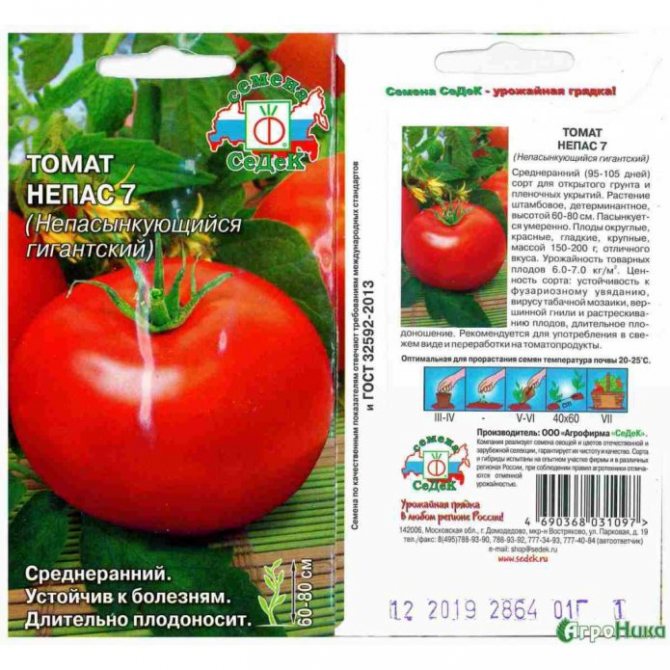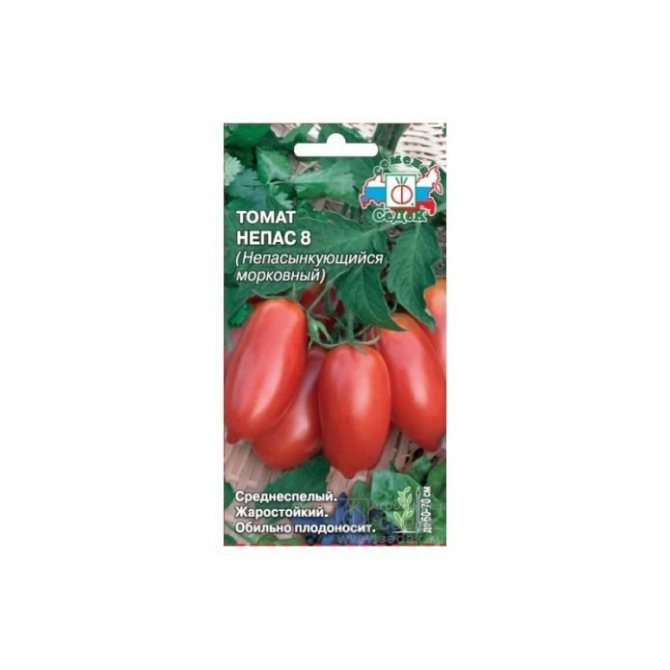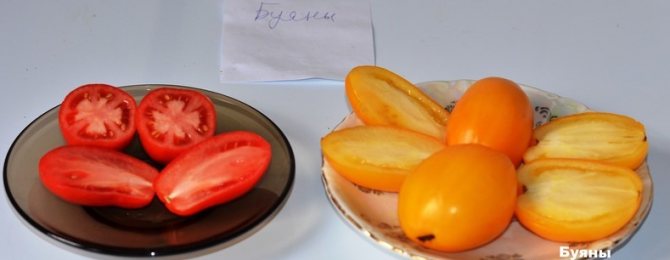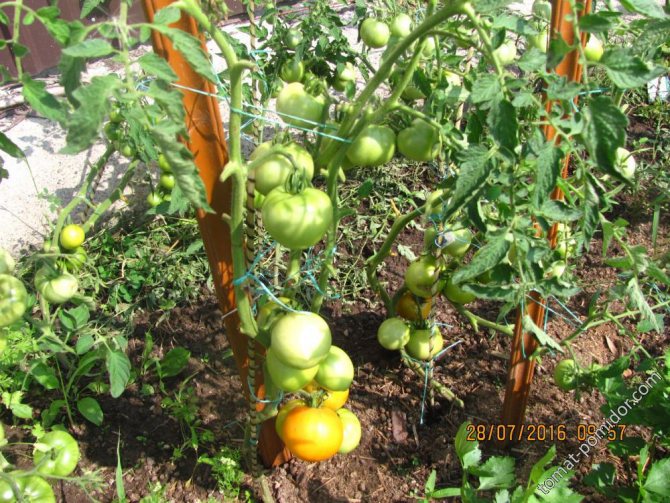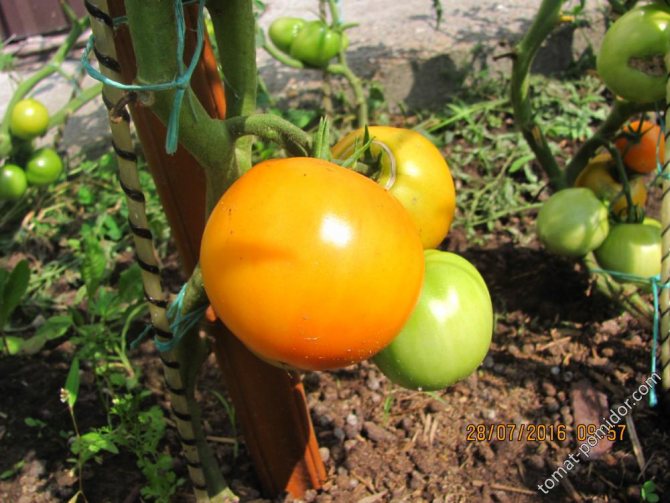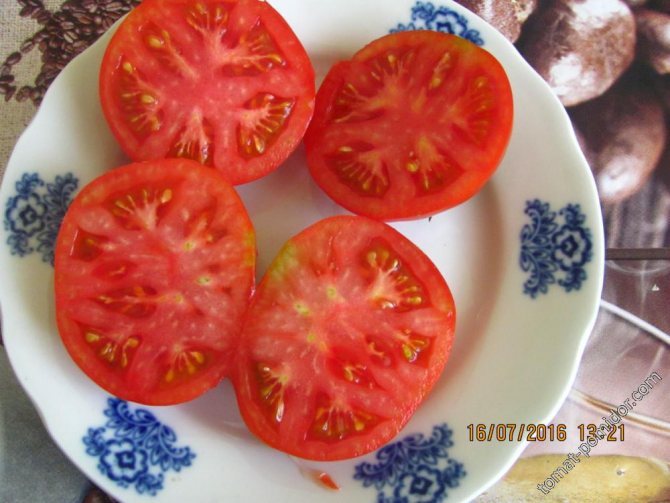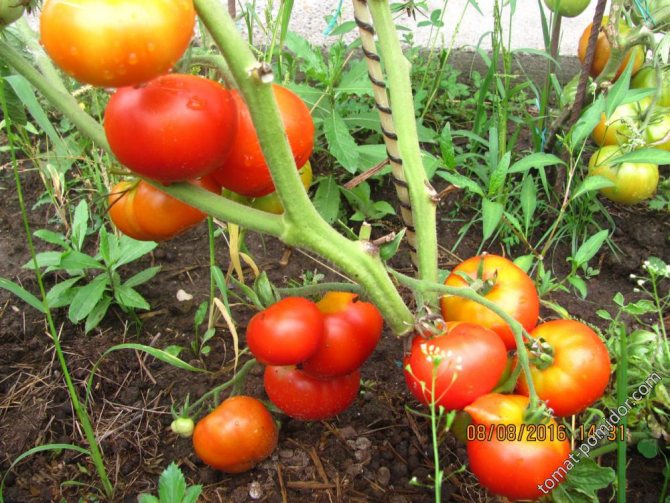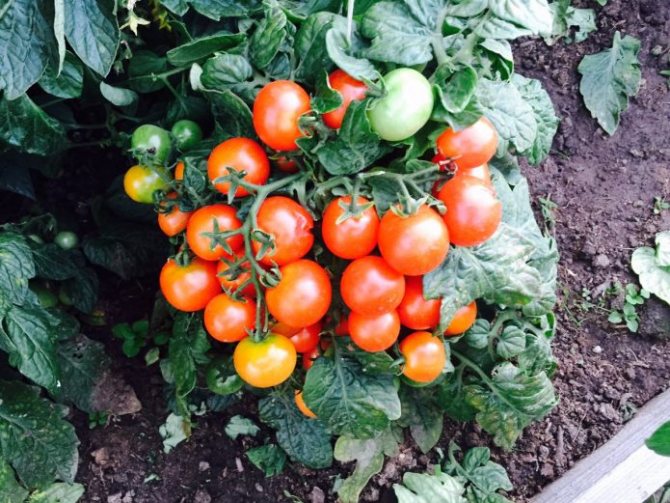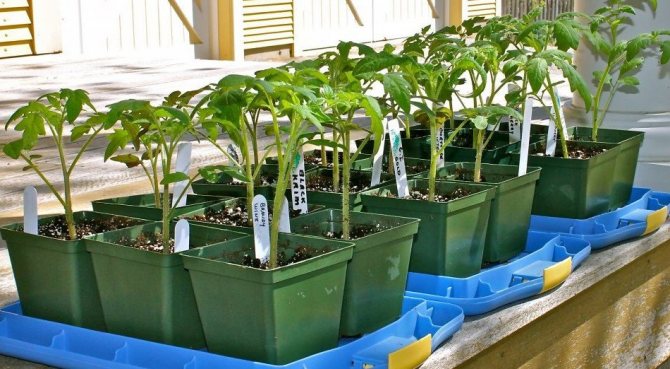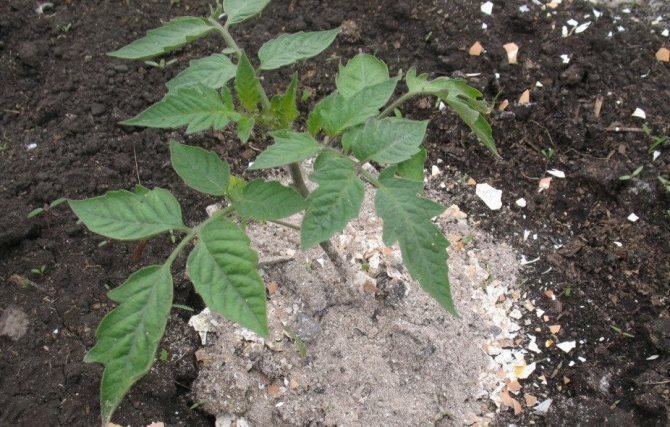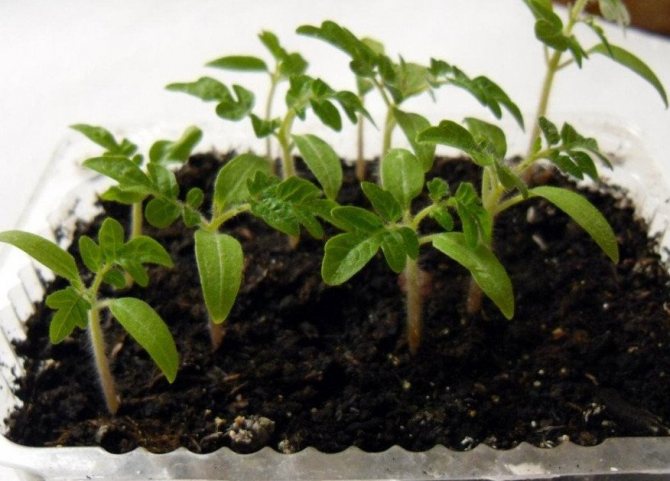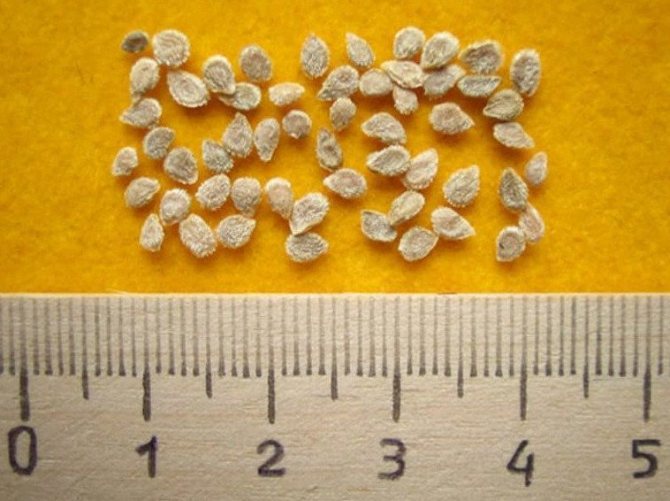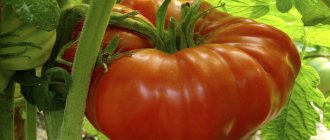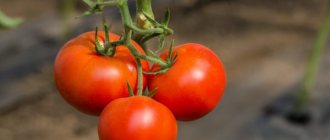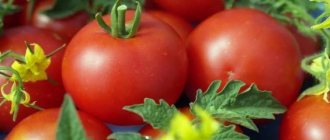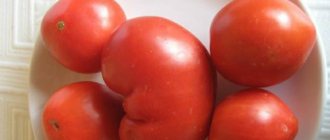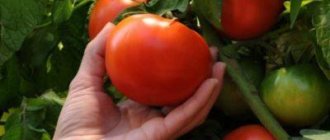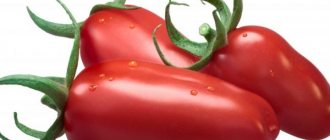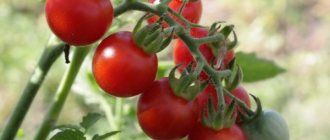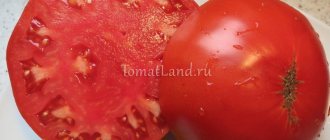Are you looking for vegetable seeds for the new planting season? Pay attention to the Raspberry Nonsynk Tomato. As the name implies, pinching, which so scares many gardeners, will not be required during its cultivation. However, this is far from the only advantage of the variety. Let's take a closer look in our article with the characteristics and descriptions with reviews of gardeners.

The unsaturated raspberry tomato is intended for growing both under film (in regions with a changeable climate) and in the open field. A compact bush, up to half a meter in height, does not require the establishment of supports, tying, etc. And the yield is excellent!


The fruits of a raspberry (or, as it is also called, pink) tomato are round in shape, slightly flattened on the sides, weight, depending on the composition of the soil and growing conditions, from 60 to 150 grams.
The taste is full-bodied. Tomatoes are juicy, but at the same time, due to their dense peel, they keep their shape perfectly, do not wrinkle during transportation and during long-term storage.
The undoubted advantages of the variety are:
- the onset of fruiting 90-95 days after planting;
- gradual ripening of tomatoes;
- the termination of the growth of stems the moment the inflorescences appear, which allows you to form a neat compact bush without pruning and garters;
- 5-7 fruits weighing up to 300 g are formed on one brush;
- tomatoes are round, smooth, universal use.
The tomato has a "brother", only it is called Non-Sunshine Red. Differs in smaller fruits and not too pronounced aroma. Taste characteristics are excellent, except that some people complain about the lack of sweetness. But here, as they say: "the taste and color."
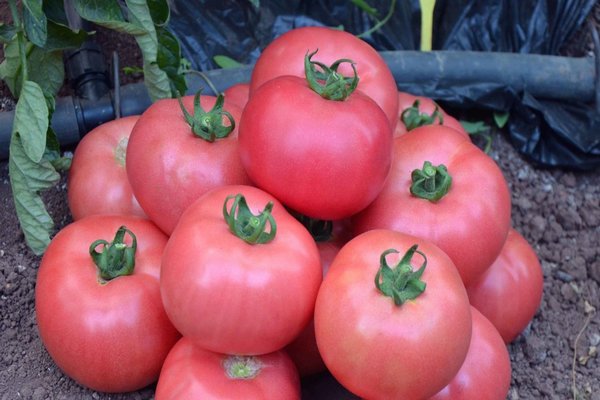

The unsaturated raspberry refers not only to determinant, but to super-determinant varieties. This means that his growth is not only unlimited, but also very fast.
The undoubted advantages are simplicity in cultivation and minimal requirements for care. That is why the Nonsynkayuschiy raspberry tomato is sometimes called a variety for the lazy (as a joke, of course).
Resistance to environmental conditions should be noted. Even sudden changes in temperature and high humidity are not terrible for him. And it became possible to get an excellent harvest in regions with a changeable climate.
The unsaturated raspberry is not afraid of the main diseases of tomatoes, including late blight and bacterial infections.
Even with a short and cold summer, you can not "rely" on it. With the harvest, the Nepysynky Crimson will not let you down.
Characteristics and description of varieties of unsaturated tomatoes
Unsaturated tomatoes make up a group of determinate varieties with a tough, erect stem (standard). Their growth does not exceed 70 cm, since it is limited by the laying of the apical inflorescence. Their lateral shoots are underdeveloped and do not draw off most of the nutrients.
Nonsynchka varieties are very diverse. Most are bred naturally, but there are also hybrids (this is evidenced by the presence of the letter F in the name). When self-propagating a hybrid variety, valuable breed qualities may be lost.
The bushes have a compact, thin crown. Most of them are early ripening tomatoes (fruit ripening occurs 85-110 days after germination).The bunches contain from 5 to 7 fruits of a round or oblong shape. On average, about 2 kg of fruits are removed from one bush. During the fruiting period, the bush is strewn with ripening tomatoes and needs to be tied up.
The fruits are juicy, round or elongated, with a variety of shades - from yellow and pink to bright red. Their size depends on the variety and can vary from 20 g (Cherry) to 140 g (Pink). A slight sourness is noted in the taste. They are juicy, with a dense skin, retain their shape during transportation. Their dense rind makes them ideal for canning. Due to early ripening, some varieties are capable of producing two harvests during the growing season.
Type selection
The most important rule when choosing a variety for growing is to be guided by your tastes and preferences. For fresh and unprocessed consumption, the Nepas subspecies No. 2 and No. 7 are ideal, and Nepas No. 3 also has similar qualities. If you want to use a variety for conservation, then subspecies with an average fruit size and a dense inner part are perfect, these are Nepas No. 4 and No. 6. If you are trying to decorate your dish with wonderful tomatoes, then use the Nepas subspecies No9, No11 and No10 for this. Due to their characteristics, they are used not only for decorating dishes, but also for canning.
Main positive and negative aspects
The unpretentiousness and simplicity of breeding is the main advantage of non-spongy varieties, because the laborious process of pinching the grown stepchildren is excluded from the care technology.


Other advantages include the following:
- Rapid ripening makes it possible to harvest two tomato crops during the growing season.
- Cold-hardy crops can be grown in risky farming regions.
- The compact crown contributes to the economical placement of bushes in the garden.
- Almost all non-puffy varieties are recommended for cultivation both in the greenhouse and in the open field.
Among the disadvantages can be noted a small mass of fruits, not very plentiful harvests.
Varieties of unsaturated tomato
There are many varieties of unsaturated tomatoes, bred specifically for a particular group of needs. There are salad varieties, varieties intended for canning, varieties bred for the greenhouse and for open ground:
- Salting grade. Grows well both in the ground and in the greenhouse. It is mid-season - it takes up to 120 days for the fruit to ripen. Produces a large number of bright red oblong tomatoes. Fruits with a dense structure are suitable for whole-fruit preservation and long-term storage.
- Variety Cherry. Compact bushes. Their short stature (up to 40 cm) makes them suitable for balcony breeding. The crown is of medium density, with a strong stem. Fruits are medium-sized, round in shape with cherry-colored skin, weighing only up to 20g. Cherry-type tomatoes go well for canning and decorating dishes.
- The Scarlet variety is distinguished by its unpretentiousness. Cold hardy, very productive, disease resistant. Grown in the open field. Fruits are medium-sized (up to 80 g), rich scarlet color. Suitable for canning.
- Grade Cylindrical. Bushes are undersized (up to 60 cm), grow with a stem. Up to 7 brushes are formed on them, fleshy fruits with a dense skin ripen for 102 days. They behave very well when canning. The yield is high - up to 9 kg of fruits are harvested per square meter.
- Canned variety is suitable for external and internal breeding. The bush is undersized, up to 50 cm, ripens early. Produces a large number of bright oblong fruits. Ideal for canning.
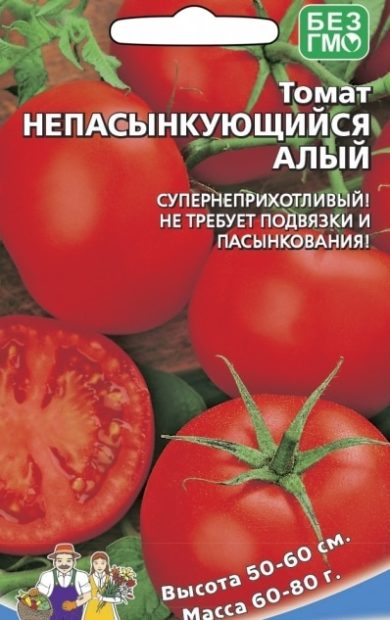

The most fruitful and sweet varieties of tomatoes are standard and undersized non-strawberry tomatoes of the Nepas series. These 14 varieties were developed by SeDec and included in the State Register in 2017-2019. Here is some of them:
- Variety Red or Nepas 1 is the basis of the series. Possesses the best qualities inherent in non-sprinkling varieties. Standard bush, does not require crown formation, grows in open and closed ground. The dense crown provides abundance of light to the fruit. Bears fruit in July. Produces a large number of beautiful bright red fruits of the same rounded shape. Used for salads and preserves.
- Raspberry or Nepas 2 is a variety of pink tomatoes. Very unpretentious, cold-resistant, suitable for growing in a harsh climate in a greenhouse. Medium-early ripening fruits (112 days). On each brush, up to 6 large, fruits (100g) of bright crimson color, flat-round shape are formed. They are characterized by a high sugar content.
- Pink or Nepas 3 is also mid-season, with large (up to 230g) fruits and good yield (6.4 kg per square meter). The fruits have a sweet and sour taste. Suitable for fresh consumption, conservation, long-term storage. The variety was entered into the State Register in 2018.
- Heart-shaped orange (Nepas 4). Refers to early maturing (105 days before ripening). A distinctive feature of the fruit is its shape in the form of hearts and orange color, which indicates a high content of carotene. They are used more often fresh, but they are also good in canned form. Decorative, serve as a decoration for dishes.
- Orange with a "spout" or Nepas 5. Low bushes, easy to care for, can be grown in regions with a harsh climate under the film. Fruits are unusually decorative: bright orange in color, up to 70 g, slightly elongated, with a spout at the top, they look beautiful in jars when canned whole. Other advantages are good taste and high beta-carotene content.
- The striped variety (Nepas 10) is famous for its decorative oval-shaped fruits, crimson in color with yellow veins. Low-growing bushes with a strong central stem do not form side shoots. They give many brushes with 5-6 medium-sized fruits each. Intense tomato flavor, fleshy flesh.
- Large-fruited or Nepas 12. Refers to early maturing, determinant. 112 days after planting, the bush gives a lot of round, red fruits with good taste, weighing up to 140 g. From a square meter of area, up to 6.2 kg of tomatoes are harvested.
- Plum or Nepas 13. Adapted to various climatic conditions. Calmly tolerates weather changes and approaches breeding in a reckless way. It bears fruit amicably, giving fruit, elongated in the form of cream, weighing 90 g. Color is bright red, the pulp is dense, dryish, the skin is strong. Suitable for canning by drying. Well transported.
- Sugar or Nepas 14. The name reflects the excellent taste of the fruit, which has a high sugar content. Tomatoes are large, oblong, reaching a weight of 100 g. Up to 7.2 kg are harvested from a square meter. The variety is very early, bears fruit amicably. During the fruiting period, it needs a garter.
See also Description, characteristics and specifics of growing tomato Bakedosolny


Reviews of gardeners
Svetlana M., Asha: “A vegetable garden is one of my favorite pastimes, however, in our climatic conditions it is difficult to get a big harvest, and there is a little more work with plants. I prefer non-sunflower and early maturing varieties, such as the non-sunflower raspberry or plum. They form neat bushes, ripen quickly and allow you to enjoy the results of their own labor even in the summer months. I roll the plum one for the winter, and the whole family eats pink with pleasure. "
Alexey V., Novoorsk: “Our summer is warm, even hot, but dry and short. Growing a crop is sometimes difficult, so before buying a new variety, I read its description and gardeners' reviews. It helps me understand which seeds are worth buying from the store and which are not. I bought the last curiosity - Nonsynky striped, I really liked the tomato externally, and the description of the variety was good.The yield is sufficient, however, I don’t plant much, rather for fun, but enough for salting ”.
Arina D., Cherepanovo: “Our whole family loves tomatoes. In the summer we eat fresh, and in the winter we take out pot-bellied cans of canned food and master them with pleasure. To stock up for the winter, you need to grow something in the warm season. I have several varieties of tomatoes, but most of all I like nonsynky ones - there is less work with them... Most of all I liked the sugar one, which has a round and very sweet fruit. "
Growing features
Tomatoes of the Nepas series are called the "weekend" culture. The rules of agricultural technology for their cultivation are so simple that with the very minimum participation of a person, they feel good and actively bear fruit.
Seeds are sown for seedlings 2 months before planting in the ground, and in regions with a warm climate, a seedless growing method is also allowed. The optimal time is March or April, depending on the climate. After soaking in a pale manganese solution, they are sown in a container with a fertile mixture and covered under a film until germination. After the appearance of the cotyledon leaves, they are transplanted (dived) into cups, providing abundant lighting. Two weeks before the time for planting in the ground comes, hardening is carried out in the fresh air (at a temperature of + 15 ° C and bright sun).
When organizing the beds, they choose sod or loamy soil, to which ash, humus are added and enriched with nitrogen. The method of growing tomatoes in buckets is used. In them, the soil warms up quickly, and the plant uses the nutrients to the fullest. Such beds can be moved around the site, and, in bad weather, they can be brought into the room. Before the start of planting work, holes are punched in the bottom for moisture and drainage from broken bricks is laid on the bottom.
Yield
8-10 kg are harvested from 1 m2. The productivity of 1 bush is 4.5-5 kg.
Productivity varies by variety. 1.5 kg are harvested from cherry. From bushes with medium fruits, the yield is 7-9 kg.
7-8 kg are harvested from 1 m2.
The bulk of the early harvest ripens right at the root. The remains of green fruits are collected in boxes before freezing and ripen. The taste of the fruit deteriorates greatly from long-term storage, so you should not delay it.
In a cool place (for example, in the refrigerator or cellar), tomatoes can be stored for quite a long time. They tolerate transportation well.
Care rules
Unsaturated tomatoes are watered abundantly, but not too often, depending on the condition of the soil and the amount of precipitation. At the end of flowering, the frequency of watering is reduced, stimulating the process of fruit formation. Loosening is helpful after watering, especially if the soil is heavy.
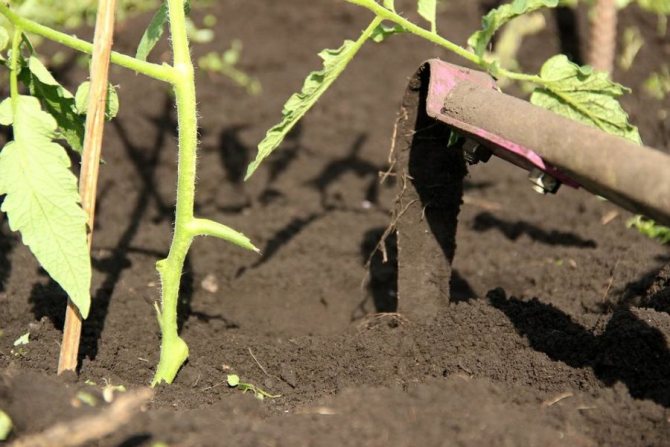

Expert opinion
Stanislav Pavlovich
Gardener with 17 years of experience and our expert
Ask a Question
Important! 10 days after planting, the plants are spud, which activates root growth. After another month, hilling is carried out again. For non-sprinkling varieties, it is better to choose drip irrigation or in-furrow irrigation.
During the growing period of green mass, nitrogen fertilizers are a suitable top dressing for tomatoes. When the period of fruit formation begins, fertilizers are applied based on potassium and phosphorus. In total, three dressings are made:
- the first time they are fed 10 days after disembarkation;
- the second time - with the beginning of the formation of buds;
- the third feeding is timed to the blooming of the third brush.
See also Pink Flamingo tomato variety: yield and cultivation features
You can feed the plantings with liquid complex fertilizers such as "Ideal" or a solution of poultry droppings (1 to 15).
There is a way to grow tomatoes in boxes - beds, enclosed in wooden walls. Arcs with a covering material are installed above such a bed.This helps to protect plantings from the external environment, extend the growing season, and achieve a longer term for the formation of the crop. The soil in the garden bed is fertilized with organic residues, which, when decomposed, give additional heat. Under these conditions, tomatoes are grown directly from seed.
All unsaturated tomatoes are low and do not need crown formation. During the period of fruit formation, it is better to tie the bushes to prevent lodging.
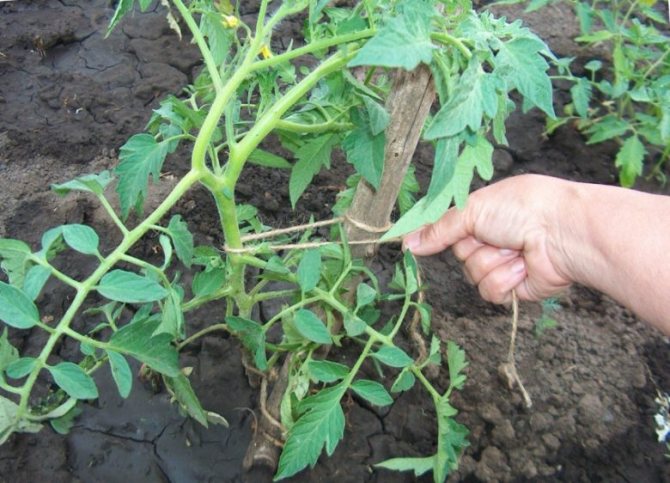

Outdoors, plants are pollinated by wind and insects. When grown in greenhouses, the bushes are manually pollinated by gentle shaking, the brushes are treated with fruit-forming stimulants Bud, Ovary. Complex fertilizers also stimulate pollination.
Disease and pest control methods
One of the areas of proper plant care is considered to be protection from diseases and pest attacks. It is important that the air humidity does not exceed the permissible values. It is necessary to avoid stuffiness, waterlogging of the soil. In these situations, viral and fungal infections are dangerous to plants:
- Late blight. The fungus spreads quickly, affecting the leaves, then the stems and fruits. The entire crop gradually dies. Until the disease spreads, the affected leaves are removed, the harvest is harvested for ripening in the air. The bushes are sprayed with Fitosporin, Ecosil.
- Rot. There are three known types of the disease caused by several types of fungus. Common symptoms are mold on the leaves, black progressive spots on the fruit. Control methods - compliance with the rules of agricultural technology, Topaz, Oxyhom preparations.
- Brown spot attacks the lower leaves, causing yellow streaks on them. Gradually reaching the top, the disease affects the entire bush, leading to death. There is no effective treatment. In order to prevent the spread of infection, the plants are regularly examined, they are sprayed with fungicides Poliram, Kaptan.
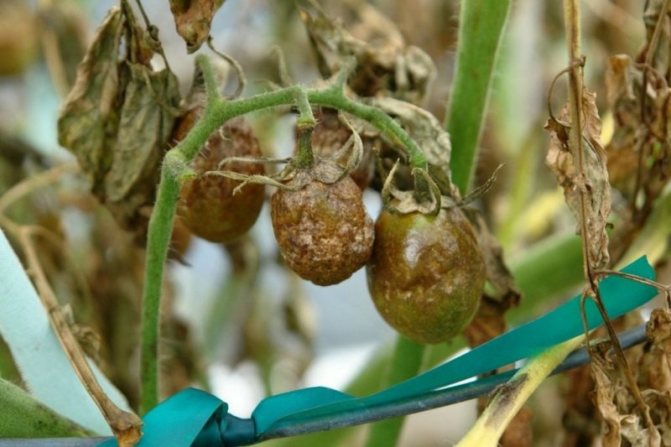

Late blight
Of the pests for unsaturated tomatoes, aphids, spider mites, and whiteflies are dangerous. For prevention, the bushes are sprayed with soapy water, ash solution.


